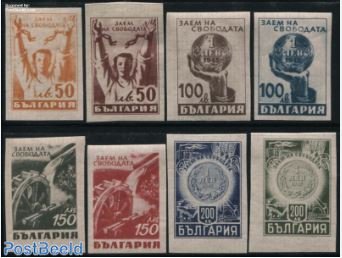Stamps are more than just postage—they are miniature representations of a nation’s identity, culture, and values. Exploring stamps from different cultures: unveiling the beauty and controversy behind global postal art is an intriguing journey into the rich history and significance of stamps. These tiny works of art not only serve a practical function but also act as cultural artifacts that communicate the spirit, traditions, and histories of their respective countries. However, the beauty of stamps is often accompanied by controversy, as their designs can sometimes spark debates over representation, historical accuracy, and the portrayal of sensitive topics.
In this article, we will delve into the multifaceted world of stamps from different cultures, examining the positive artistic expressions they embody, as well as the challenges they present. By exploring stamps from different cultures, we gain insight into the diverse ways nations have used this art form to express identity, promote values, and, at times, engage in political discourse.

The Beauty of Stamps as Cultural Artifacts
At their core, stamps are pieces of art that encapsulate the culture, history, and values of a nation. Exploring stamps from different cultures reveals how these tiny artworks serve as powerful symbols of national pride. Whether depicting national heroes, important historical events, or natural wonders, stamps celebrate the diverse heritage of each country.
For example, countries like India and Japan have issued stamps that showcase their rich cultural traditions, featuring depictions of ancient temples, religious ceremonies, and folk art. These stamps celebrate the deep cultural roots of these nations while also educating the world about their traditions. In this way, exploring stamps from different cultures opens up a conversation about the significance of art in preserving cultural heritage and communicating a nation’s identity to a global audience.
In the Western world, stamps often focus on political leaders, historical events, and national landmarks. For instance, the United States has issued stamps commemorating the founding fathers, significant moments in American history, and the diverse landscapes of the nation. The artistry behind these stamps provides a window into the values and ideals that shape a country’s identity. Exploring stamps from different cultures highlights the universal nature of using art to convey collective memory, history, and pride.
Stamps as Political and Social Commentary
While many stamps celebrate beauty and culture, they can also be controversial. Exploring stamps from different cultures: unveiling the beauty and controversy behind global postal art reveals how stamps have been used as vehicles for political statements, social commentary, and even propaganda. Stamps can reflect the political climate of the time, and at times, their designs have sparked global debates.

For example, in the 1930s, the Soviet Union issued stamps glorifying the image of Joseph Stalin, promoting the ideologies of communism and the state’s power. These stamps were not just meant to celebrate Soviet achievements but were also designed to consolidate political power and influence public perception. Exploring stamps from different cultures uncovers how stamps can be used as a tool for shaping national narratives, sometimes at the expense of political dissent.
On the other hand, stamps have also been used to protest social injustices. In the 1960s, during the Civil Rights Movement in the United States, stamps featuring iconic leaders like Martin Luther King Jr. were issued to honor the struggle for racial equality. However, even these seemingly celebratory stamps were controversial, as they sparked debates about the representation of African Americans in American history and whether such efforts were truly reflective of the country’s racial tensions at the time. Exploring stamps from different cultures invites us to reflect on how art in the form of stamps can amplify political and social voices, whether in support or opposition to dominant ideologies.
Cultural Misrepresentation and Stereotyping
One of the key controversies in exploring stamps from different cultures is the issue of cultural misrepresentation or stereotyping. The design of stamps is often shaped by the perspectives of those in power, and historically, this has led to misrepresentations of minority cultures, indigenous groups, or marginalized communities.
For instance, stamps from the colonial era frequently depicted Indigenous peoples in stereotypical or dehumanizing ways, reinforcing colonial power dynamics and racial hierarchies. The images on these stamps often lacked cultural accuracy, reducing entire civilizations to simplistic and inaccurate portrayals. Exploring stamps from different cultures thus requires a critical look at how these designs reflect not only artistic intention but also the political and cultural biases of the time.
In more recent years, there has been a growing awareness of the need for more accurate and respectful portrayals of indigenous and minority cultures on stamps. Countries are increasingly working to address historical injustices by issuing stamps that celebrate the voices and contributions of marginalized communities. Exploring stamps from different cultures today means recognizing both the progress that has been made and the ongoing challenges in ensuring that cultural representations on stamps are both accurate and respectful.
The Global Appeal of Stamp Collecting
Despite their controversies, stamps remain a powerful medium for cultural exchange and communication. Collectors from all corners of the world actively seek stamps from different countries, not just for their artistic value, but for their historical significance and the stories they tell. Exploring stamps from different cultures has become a global activity, bringing people from diverse backgrounds together through a shared interest in philately.

Stamp collectors often form communities that cross national borders, building a global network of individuals who appreciate the artistry and history behind stamps. Through their collections, enthusiasts can learn about the different customs, histories, and issues that have shaped the world. These collectors help preserve stamps from different cultures and provide a platform for continuing the dialogue about the meaning behind these stamps. By sharing stamps from different cultures, they promote understanding and respect for diverse societies, turning stamps into a bridge that connects people from around the world.
The Future of Cultural Representation in Stamps
As we continue to explore stamps from different cultures, it is important to consider the future of cultural representation in stamp design. Today, countries are more aware than ever of the responsibility they hold in creating stamps that respect the complexity and diversity of the cultures they represent. Many nations are now commissioning designers from indigenous or minority communities to ensure more accurate depictions and to avoid cultural appropriation.
Furthermore, the rise of digital stamps and the increasing involvement of global organizations like UNESCO in promoting cultural heritage through postage mean that exploring stamps from different cultures will continue to evolve. These advancements may help eliminate some of the past mistakes and offer a more inclusive and respectful approach to how different cultures are represented through stamps.

Celebrating stamp artistry is about recognizing these miniature works of art as more than just functional items—they are reflections of culture, history, and creativity. Each stamp, whether depicting a national hero, a historical event, or a beautiful landscape, tells a unique story and showcases the incredible craftsmanship involved in its design.
Conclusion
Exploring stamps from different cultures: unveiling the beauty and controversy behind global postal art highlights the dual nature of stamps as both powerful cultural symbols and, at times, contentious artifacts. These small, everyday objects encapsulate the beauty, history, and complexity of the societies that issue them, while also sometimes reflecting the tensions and controversies of their time. By exploring stamps from different cultures, we gain valuable insights into how nations use art to express their identity, commemorate significant events, and engage in political discourse.
As we move forward, the future of stamp design holds great promise in fostering understanding, respect, and cultural exchange. Whether celebrating cultural diversity, addressing historical injustices, or simply appreciating the artistry behind the design, stamps will continue to play an important role in connecting people from different walks of life. The journey of exploring stamps from different cultures remains a rich and multifaceted one—one that encourages us to look more closely at the small but powerful stories these postage arts tell.




